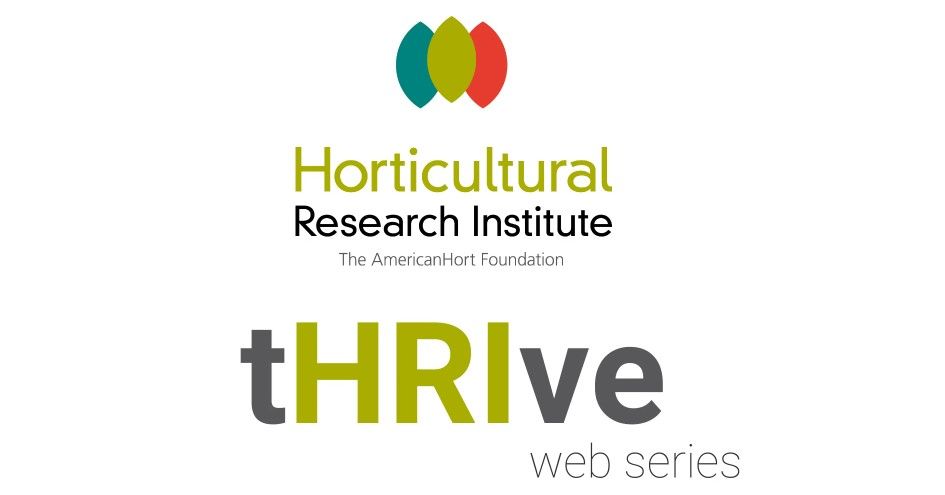Fundamental aspects of auxin foliar spray applications to woody plant cuttings
Applying auxin as a foliar spray has several advantages over traditional quick dip methods for rooting cuttings. These include potential worker safety and application efficiency. Foliar auxin sprays are also becoming an integral part of propagation systems using automated machine-assisted sticking robotics. However, not all woody species respond to foliar spray as well as a quick dip application for rooting and there are questions concerning application timing as well as the optimal number of applications. The overall goal of the research is to better understand the fundamental aspects of foliar applied auxin to cuttings.
OBEJECTIVE
The objective of the proposed research will be to answer basic questions about auxin movement in cuttings related to spray volume, single vs. multiple applications, and use of a surfactant.
Research Methodology And Significance:
Plant material: Cuttings were or will be collected from several woody plant species including hydrangea (Hydrangea paniculata), Buttonbush (Cephalanthus), and burningbush (Euonymus alatus).
Cutting propagation: Terminal cuttings were cut to an average length of four inches and the upper two sets of leaves were left intact. Following sticking, the cuttings were placed under intermittent mist. The entire mist bed was covered in a single layer of shade cloth to reduce heat load throughout the day. Cuttings were treated with 20ml per six cuttings as a foliar spray at 1000 to 5000 ppm K-IBA to the upper and lower leaf surfaces. 5,000 ppm K-IBA as a quick dip was used as a control.
SIGNIFICANCE:
Applying auxin as a foliar spray has several advantages over traditional quick dip methods for rooting cuttings. These include potential worker safety and application efficiency. Foliar auxin sprays are also becoming an integral part of propagation systems using automated machine-assisted sticking robotics. However, not all woody species respond to foliar spray as well as a quick dip application for rooting and there are questions concerning application timing as well as the optimal number of applications. Therefore, the objectives of the proposed research will be to answer basic questions about auxin movement in cuttings related to spray volume, single vs. multiple applications, and use of a surfactant
OUTCOMES AND ECONOMIC RETURN ON INVESTMENT:
One advantage of using a foliar spray to deliver auxin is reduced labor costs. Drahn (2013) compared the labor required to treat 90,000 cuttings (one Quonset house) by either quick dip or foliar spray. He estimated that treatment by quick dip required 30 labor hours (8 persons ~4 hours per person), while the foliar spray required less than 2 hours of one person’s time. A considerable savings in labor costs. However, depending on the spray concentration, K-IBA costs can be 4-times the cost of auxin used for quick dip. Therefore, understanding the interactions between auxin concentration and the optimal number of foliar sprays can directly influence both rooting success and overall costs. Completion of the proposed research should provide growers with better guidelines for applying foliar sprays related to reducing costs while maintaining high rooting success.
PRELIMINARY RESEARCH RESULTS:
In Hydrangea, the foliar K-IBA application was more effective for rooting than a quick dip, except when treated with 1,000 ppm the day after sticking (Table 1). The best rooting occurred with a treatment of 2,000 ppm the day after sticking with 94% rooting and an average of 40 roots per cutting. The remaining applications exhibited good rooting as well, but the applications of 1,000 ppm K-IBA performed better than applications of 2,000 ppm. Hydrangea cuttings did not root well at the lower auxin concentration the day after sticking (18% rooting and 2.3 roots per cutting at 1,000 ppm). This indicates that while a lower concentration may be sufficient, the cuttings needed to fully acclimate to the misting environment to root without a higher auxin concentration. This may be partly explained by the delay in sticking following transport of the cuttings that could have led to lower foliar auxin absorption.
There were no significant differences in Hydrangea rooting when auxin application was delayed for up to 6 days after sticking. There was also no obvious additive or synergistic effect observed in rooting with multiple auxin sprays. From a practical standpoint, these data provide a window for initial auxin sprays where auxin remains effective for rooting and also indicates that there is no incentive for multiple foliar treatments in Hydrangea cuttings.
Table 1. Rooting in Hydrangea paniculata ‘Limelight’ cuttings treated with 1,000 or 2,000 ppm IBA foliar sprays at different times after sticking.
| Application time | IBA [ppm] | Rooting (%) | Roots per cutting | Roots per rooted cutting |
|---|---|---|---|---|
| After sticking | 1,000 | 18.0 dx | 2.3 d | 6.6 |
| 2,000 | 94.4 a | 40.4 a | 41.6 | |
| Day 2 | 1,000 | 80.5 b | 34.0 ab | 44.7 |
Share This Post






